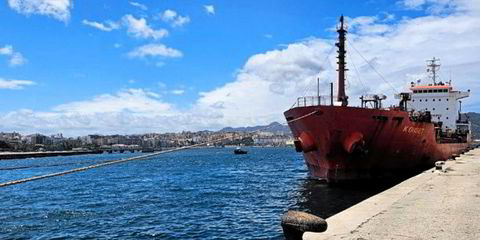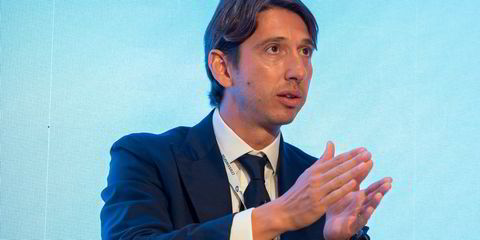With shipping gearing up to join the European Union Emissions Trading System (EU ETS) at the start of next year, TradeWinds took to the stage at Nor-Shipping to discuss how the industry will have to navigate carbon markets.
Trafigura head of wet freight Andrea Olivi said shipping’s participation in the EU ETS means that shipping faces what it should have faced some time ago: a price on carbon.
“By putting a price on carbon, we are then finally able to take the right commercial decisions while factoring in environmental aspects,” he told the TradeWinds Shipowners Forum Oslo.

“What we’re doing at the moment is we’re obviously focusing on fixing modern vessels. We’re fixing vessels with lower consumption. We are investing in retrofitting energy-saving devices on our vessels.”
Klaveness Combination Carriers chief executive Engebret Dahm agreed that it is positive that there is finally a price on greenhouse gas emissions for shipping.
“So we as a shipowner and the whole community get the incentives to do something — changing the way the business is run,” he said.
“We have … this natural advantage as our ships are ballasting for less than standard ships, meaning that we have a far lower carbon emission per tonne transported than our competitors. But our main preparation for the EU ETS is to make our business even more efficient.”
Also featured in the episode are Frederic Bouthillier, head of shipping at Vertis Environmental Finance; Antonello Zanfardino, senior carbon analyst at BRS Group; and Sofia Furstenberg Stott, partner at Furstenberg Maritime Advisory.
Listen in the player above, or on Google Podcasts, Apple Podcasts, Stitcher, Pandora, Spotify or Soundcloud.
Read more
- Podcast: Are contracts the key to unlocking emissions cuts in shipping now?
- Cargill’s Dieleman on methanol fuelling piggybackers: ‘That’s exactly what we wanted’
- Sea Cargo Charter calls for action as report shows shipping’s climate alignment stuck in neutral
- Cargill Ocean reports carbon dip driven by ‘more sluggish economic environment’
- Viewpoint: Why ammonia will accelerate autonomy, usher in a new safety era and reshape shipping



